 To enhance service speed and avoid tariff delays, we've opened a US warehouse. All US orders ship directly from our US facility.
To enhance service speed and avoid tariff delays, we've opened a US warehouse. All US orders ship directly from our US facility.
| Cat. No. | Product Name | Field of Application | Chemical Structure |
|---|---|---|---|
| A422 | Budigalimab Biosimilar(Anti-PDCD1 / PD-1 / CD279 Reference Antibody) Featured |
Budigalimab (ABBV 181; PR 1648817) is a humanized IgG1 monoclonal antibody targeting programmed cell death 1 (PD-1) receptor. Budigalimab is Fc mutated thus to reduce Fc receptor interactions and limit effector function.
More description
|
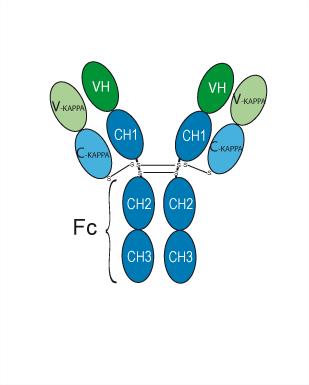
|
| DC66277 | DSPE-PEG-TCO (MW 2000) Featured |
DSPE-PEG-TCO (2000 Da) is a functionalized polyethylene glycol lipid conjugate engineered to enhance drug delivery systems. This amphiphilic polymer-lipid hybrid demonstrates unique capabilities in optimizing the bioavailability and targeted distribution of hydrophobic therapeutic compounds. Its molecular architecture combines a lipid anchor with a biocompatible PEG chain terminated by a trans-cyclooctene (TCO) group, enabling precise tissue-specific interactions while improving pharmacokinetic profiles. Researchers frequently employ this advanced biomaterial in developing nanoparticle formulations and ligand-directed therapeutic platforms for enhanced precision medicine applications.
More description
|

|
| DC21314 | ML316 Featured |
ML316 is a specific antifungal agent that fungal-selectively inhibits the mitochondrial phosphate carrier Mir1, exhibits potent antifungal activity against the moderatelyazole-resistant C. albicans strain CaCi-2 with MIC of 0.05 ug/ml.
More description
|
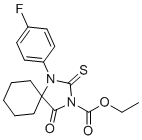
|
| DC23024 | N-65828 Featured |
NCI-65828 (designated as N 65828,NSC-65828) is a small-molecule inhibitor targeting angiogenin (ANG), a protein critical for angiogenesis and cellular proliferation. Its therapeutic potential stems from selective suppression of ANG's ribonucleolytic function, a biochemical activity essential for mediating downstream biological effects. By disrupting ANG's enzymatic capacity to cleave RNA substrates, NCI-65828 attenuates the protein's pro-angiogenic signaling pathways.
Preclinical evaluations highlight its multifaceted antitumor properties. In vitro studies using diverse cancer cell models—including bladder carcinoma (T24; IC₅₀ = 1.3 ± 0.5 μM), cervical adenocarcinoma (HeLa; IC₅₀ = 1.9 ± 0.4 μM), and urothelial carcinoma (UROtsa; IC₅₀ = 3.2 ± 0.8 μM)—demonstrate dose-dependent antiproliferative effects, with potency variations reflecting tissue-specific sensitivity. Parallel experiments in human umbilical vein endothelial cells (HUVECs) reveal significant inhibition of capillary-like tube formation, confirming its antiangiogenic efficacy in disrupting endothelial morphogenesis.
Notably, in vivo investigations using transgenic murine models demonstrate that NCI-65828 effectively suppresses the development of prostatic intraepithelial neoplasia (PIN) lesions. Mechanistic analysis indicates this activity arises from direct enzymatic inhibition rather than interference with ANG's intracellular trafficking, as nuclear translocation remains unaffected—a distinguishing feature that differentiates it from other ANG-targeted agents. This selective mode of action positions NCI-65828 as a precision tool for studying ANG-dependent pathologies.
More description
|
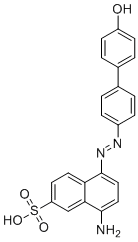
|
| DC60792 | 10-Oxo-12(Z)-octadecenoic acid Featured |
10-oxo-12(Z)-Octadecenoic acid is a metabolite of linoleic acid and an activator of transient receptor potential vanilloid 1 (TRPV1). It is formed from linoleic acid by conjugated linoleic acid dehydrogenase (CLA-DH) via a 10-hydroxy-12(Z)-octadecenoic acid intermediate and can also be produced from linoleic acid by gut microbiota.1 10-oxo-12(Z)-Octadecenoic acid (100 µM) selectively increases calcium levels in HEK293 cells expressing TRPV1 over those expressing TRPV2, TRPV3, TRPV4, and TRP melastatin 8 (TRPM8). It also induces inward currents in HEK293 cells expressing TRPV1, an effect that can be blocked by the TRPV1 antagonist capsazepine (Item No. 10007518). Dietary administration of 10-oxo-12(Z)-octadecenoic acid (0.1% w/w) reduces weight gain and adipose tissue weight and increases the expression of the gene encoding mitochondrial uncoupling protein 1 (Ucp1) in wild-type, but not Trpv1 knockout, mice fed a high-fat diet. It also decreases plasma glucose and triglyceride levels in diabetic KKAy mice fed a high-fat diet.
More description
|
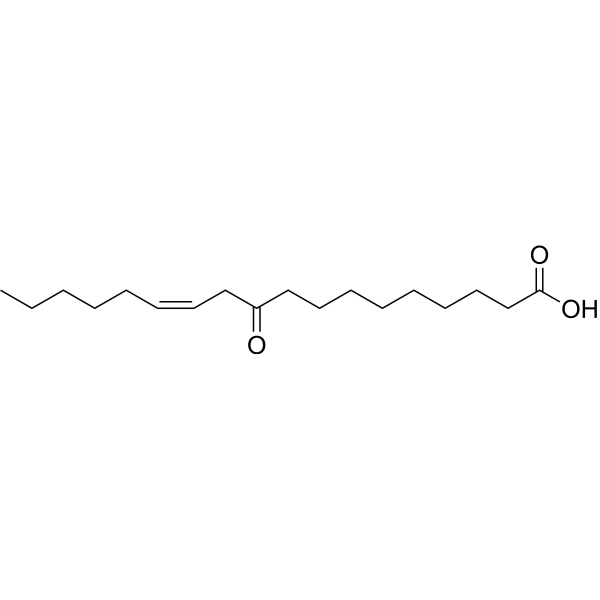
|
| DC49987 | 5β-Cholanic acid Featured |
5β-Cholanic acid can be used for 5β-Cholanic acid derivatives synthesis.
More description
|
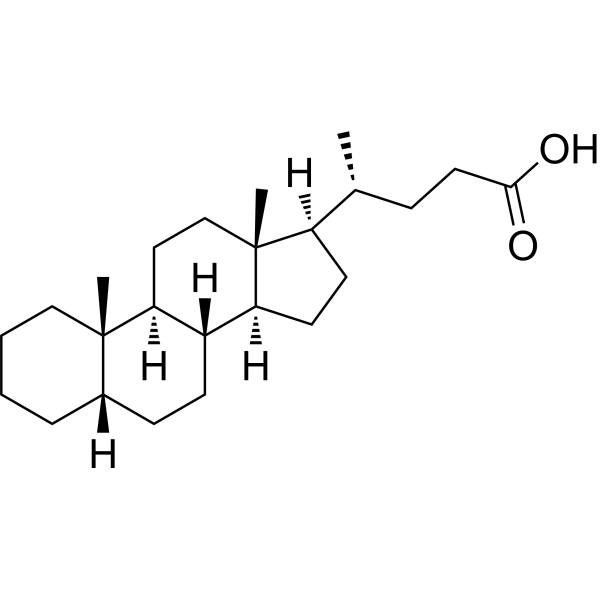
|
| DC9212 | Furafylline Featured |
Furafylline is a potent and selective inhibitor of human cytochrome P450IA2 with an IC50 of 0.07 μM.
More description
|

|
| DC20164 | PF-04965842 (Abrocitinib) Featured |
PF-04965842 is a selective Janus kinase 1 (JAK1) inhibitor, demonstrating potent activity against JAK1 with an IC50 of 29 nM. Its selectivity is evident from its significantly higher IC50 values for other JAK family members: 803 nM for JAK2, > 10,000 nM for JAK3, and 1,250 nM for TYK2. This selectivity profile suggests that PF-04965842 preferentially targets JAK1 over other JAK isoforms, which could be advantageous in reducing off-target effects and improving therapeutic outcomes in conditions where JAK1 signaling is implicated.
More description
|
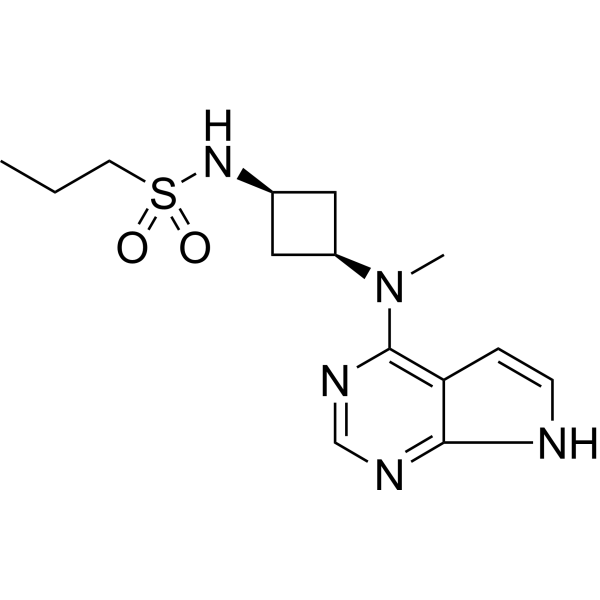
|
| DC45033 | RapiFluor-MS Featured |
RapiFluor-MS can be used a marker for LC-MS/MS analysis of N-glycans, which provides the highest MS signal enhancement for neutral glycans.
More description
|
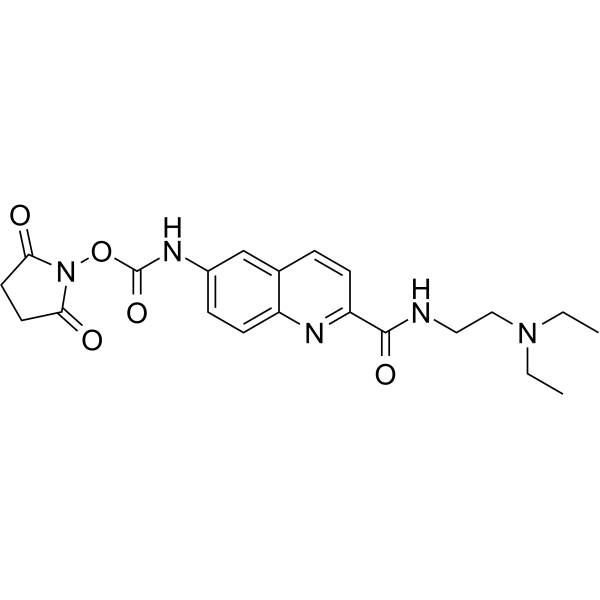
|
| DC22747 | AICP Featured |
AICP is a highly potent and selective GluN2C-containing NMDA receptor agonist that specifically targets the glycine-binding site of these receptors. It exhibits an EC50 of 1.7 nM at GluN1/GluN2C NMDA receptors, making it a powerful tool for studying the functional roles of GluN2C-containing NMDA receptors in the central nervous system.
More description
|
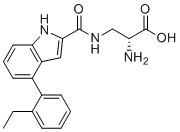
|
| DC74218 | UT-59 Featured |
UT-59 is a specific inhibitor that targets the cholesterol-sensing membrane protein Scap (SREBP cleavage-activating protein). It functions by binding to Scap's cholesterol-binding site, which prevents Scap from interacting with SREBPs (sterol regulatory element-binding proteins). This inhibition blocks the activation of SREBPs, which are key transcription factors involved in lipid and cholesterol biosynthesis. As a result, UT-59 effectively suppresses lipid synthesis, making it a potential therapeutic candidate for conditions associated with dysregulated lipid metabolism, such as hyperlipidemia, atherosclerosis, or metabolic disorders.
More description
|

|
| DC42587 | Bexin-1 Featured |
Bexin-1 is a specific inhibitor that targets Munc13-4, a protein critical for regulated exocytosis, particularly in secretory cells such as immune cells (e.g., cytotoxic T lymphocytes, mast cells) and neuroendocrine cells. Munc13-4 plays a key role in vesicle priming and fusion with the plasma membrane, a process essential for the release of secretory granules containing hormones, neurotransmitters, or immune mediators.
More description
|

|
| DC72629 | Eucatropine Featured |
Eucatropine is a synthetic anticholinergic agent that acts as a potent inhibitor of muscarinic acetylcholine receptors (mAChRs). These receptors are part of the parasympathetic nervous system and play a key role in mediating the effects of acetylcholine, a neurotransmitter involved in various physiological processes such as smooth muscle contraction, glandular secretion, and heart rate regulation.
More description
|

|
| DC9605 | Dienogest Featured |
Dienogest(STS-557) is a specific progesterone receptor agonist with potent oral endometrial activity and is used in the treatment of endometriosis.
More description
|

|
| DC73789 | K306 Featured |
K306 is a small molecule agonist that specifically targets SH2-containing 5' inositol phosphatase 1 (SHIP1), an enzyme involved in regulating cellular signaling pathways. SHIP1 is a lipid phosphatase that hydrolyzes the 5' phosphate of phosphatidylinositol-3,4,5-trisphosphate (PIP3), converting it to phosphatidylinositol-3,4-bisphosphate (PI(3,4)P2). This activity modulates the PI3K (phosphoinositide 3-kinase) signaling pathway, which is critical for cell survival, proliferation, and immune responses.
More description
|

|
| DC72952 | Savirin Featured |
Savirin (S. aureus virulence inhibitor) is a small molecule that targets the agr (accessory gene regulator) quorum sensing system in Staphylococcus aureus (S. aureus). The agr system is a key regulatory pathway that controls the expression of virulence factors in S. aureus, which are critical for its pathogenicity. The system involves a two-component signal transduction pathway consisting of AgrC (a histidine kinase) and AgrA (a response regulator).
More description
|

|
| DC67289 | Hydrangetin Featured |
Hydrangetin is a bioactive compound that has been identified as having antiplatelet aggregation properties, meaning it can help prevent blood clots by inhibiting the clumping together of platelets. This compound can be isolated from Zanthoxylum schinifolium, a plant commonly known as the Sichuan pepper or Korean pepper, which is used in traditional medicine and culinary practices in East Asia.
More description
|

|
| DC47821 | Ricinine Featured |
Ricinine is a pyridine alkaloid found in the seeds and leaves of the castor oil plant (Ricinus communis). While Ricinus communis is primarily known for producing ricin, a highly toxic protein, ricinine itself is a less toxic compound and has been studied for its potential pharmacological properties, including hepatoprotective effects.
More description
|
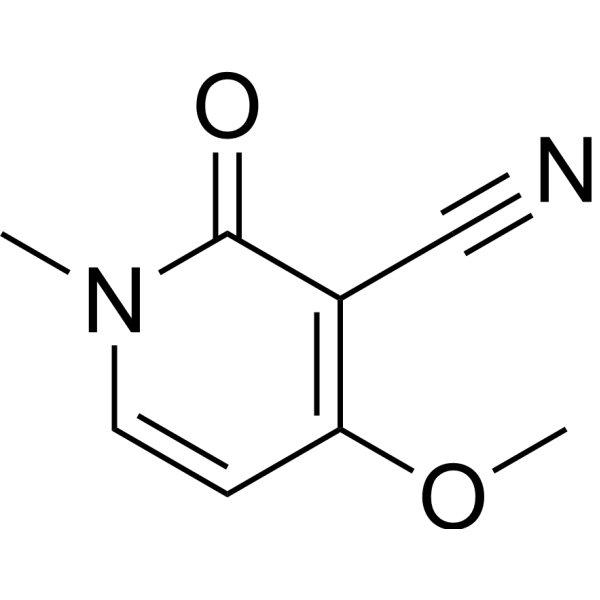
|
| DC67288 | Oxypalmatine Featured |
Oxypalmatine is a bioactive alkaloid compound isolated from Phellodendron amurense, a plant commonly known as Amur cork tree. Phellodendron amurense is a traditional medicinal plant widely used in East Asian medicine, particularly in China, Japan, and Korea, for its anti-inflammatory, antimicrobial, and antipyretic properties. Oxypalmatine is one of the many alkaloids found in this plant, contributing to its pharmacological effects.
More description
|
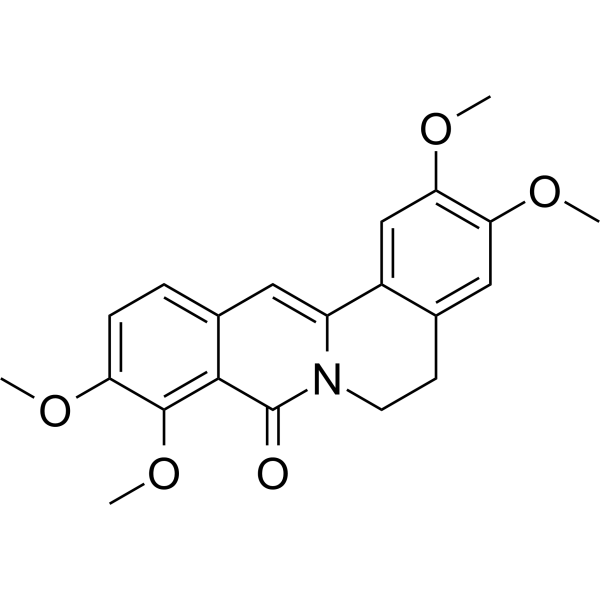
|
| DC67287 | 3-Methoxy-2',4',6',4-tetrahydroxychalcone Featured |
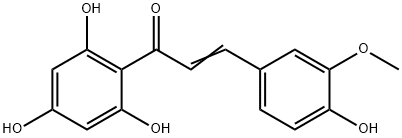
|
|
| DC67286 | N-Desmethyl Galanthamine Featured |
N-Desmethyl Galanthamine is indeed a metabolite of Galanthamine, a well-known acetylcholinesterase (AChE) inhibitor. Galanthamine is a natural alkaloid originally derived from plants such as Galanthus (snowdrop) and is widely used in the treatment of Alzheimer's disease and other cognitive disorders due to its ability to enhance cholinergic neurotransmission.
More description
|
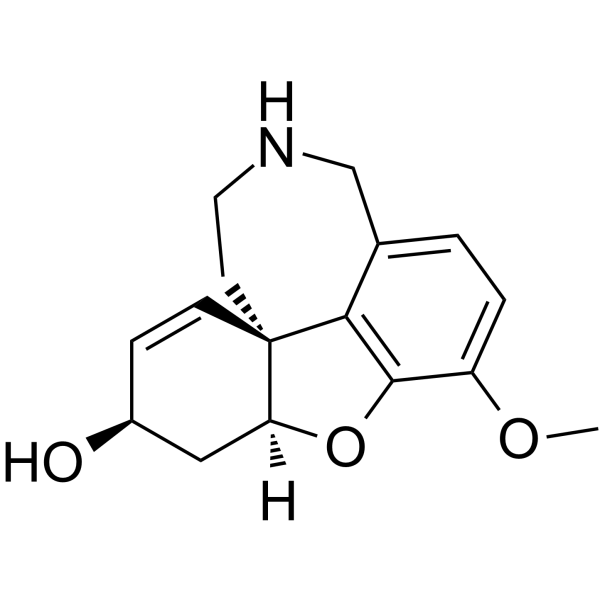
|
| DC28765 | Ethacizine hydrochloride Featured |
Ethacizine hydrochloride (Ethacizin; NIK-244) is a Class Ic antiarrhythmic agent, which means it is part of a group of drugs that primarily act by blocking sodium channels in the heart. This class of antiarrhythmic agents is known for their potent effects on slowing conduction in the heart, particularly in the atria, ventricles, and the His-Purkinje system.
More description
|

|
| DC1037 | AZD2461 Featured |
AZD2461 is indeed a novel poly (ADP-ribose) polymerase (PARP) inhibitor that has been investigated for its potential to overcome resistance mechanisms associated with other PARP inhibitors, such as Olaparib. One of the key resistance mechanisms to Olaparib is mediated by P-glycoprotein (Pgp), an efflux pump that can reduce intracellular concentrations of the drug, thereby diminishing its efficacy.
More description
|
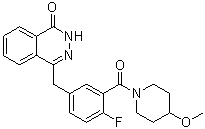
|
| DC1069 | AZD6244 (Selumetinib,ARRY-142886) Featured |
AZD6244 (Selumetinib, ARRY-142886) is highly potent to inhibit MEK1 with IC50 of 14 nM.
More description
|

|
| DC75202 | Fosaprepitant free acid Featured |
Fosaprepitant, also known as MK0517, is an antiemetic drug, administered intravenously. It is a prodrug of aprepitant. Fosaprepitant was developed by Merck & Co. and was approved. It is a prodrug of Aprepitant. It aids in the prevention of acute and delayed nausea and vomiting associated with chemotherapy treatment. Fosaprepitant is a weak inhibitor of CYP3A4, and aprepitant, the active moiety, is a substrate, inhibitor, and inducer of CYP3A4
More description
|

|
| DCAPI1187 | Nobiletin (Hexamethoxyflavone) Featured |
Nobiletin is a poly-methoxylated flavone from the citrus peel that improves memory loss. Nobiletin is a retinoid acid receptor-related orphan receptors (RORs) agonist. Nobiletin can reduce reactive oxygen species (ROS) levels in differentiated C2C12 myotubes and has anti-inflammation and anti-cancer properties, including anti-angiogenesis, anti-proliferation, anti-metastasis and induced apoptosis.
More description
|

|
| DC60646 | GSDMD agonist DMB (C-185) Featured |
GSDMD agonist DMB is a direct and selective gasdermin D (GSDMD) agonist, activates GSDMD pore formation to trigger liposome leakage with EC50 of 0.7 uM, activates GSDMD pore formation and pyroptosis without cleaving GSDMD.
DMB directly binds to GSDMD by microscale thermophoresis (MST) with a dissociation constant (KD) of 1.1 uM.
DMB induces pyroptosis in immortalized and primary cells in a GSDMD-dependent and cleavage-independent manner.
DMB binds to GSDMD and induces cleavage-independent GSDMD oligomerization and pore formation. activated human GSDMD but not other human gasdermins, also activates mouse GSDMD in the liposome leakage assay, albeit with ∼5-fold reduced efficacy.
GSDMD agonist DMB modifies GSDMD at C191, which is conserved in GSDMD from different species but not in other gasdermin family members.
DMB induces tumor regression and enhances antitumor immunity that depends on GSDMD expression in the tumor.
More description
|
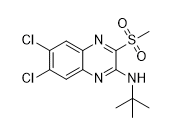
|
| A421 | Cetrelimab Biosimilar(Anti-PDCD1 / PD-1 / CD279 Reference Antibody) Featured |
Cetrelimab (JNJ 63723283; JNJ 3283) is a human IgG4κ mAb targeting PD-1. Cetrelimab binds PD-1 (Kd=1.72 nM, HEK293) to block the interaction of PD-1 with PD-L1 and PD-L2 (IC50s=111.7 ng/mL and 138.6 ng/mL, respectively). Cetrelimab stimulates peripheral T cells, increases IFN-γ, IL-2, TNF-α level and inhibits tumor growth in vivo.
More description
|

|
| DC12282 | Semaglutide (sodium salt) Featured |
Semaglutide, a long-acting GLP-1 analogue, is a glucagon-like peptide-1 (GLP-1) receptor agonist that can be used in the treatment of type 2 diabetes.
More description
|

|
| DC45570 | Tirzepatide (LY3298176) Featured |
Tirzepatide (LY3298176, GIP/GLP-1 RA, TZP) is a dual GIP/GLP-1 receptor agonist. Tirzepatide differentially induces internalization of the GIP and GLP-1 receptors with EC50 values of 18.2 nM and 18.1 nM, respectively.
More description
|

|